Corporate critic David Cay Johnston and two New York Times reporters who have won three Pulitzers each (David Barstow and Walt Bogdanich) will be among speakers at an all-day program of the Investigative Reporters & Editors Friday Jan. 24 at the CUNY Graduate School of Journalism, 219 W. 40th St., New York.
Johnston, president of IRE, is author of The Fine Print—How Big Companies Use “Plain English” to Rob You Blind, and Perfectly Legal, about tax law abuses.
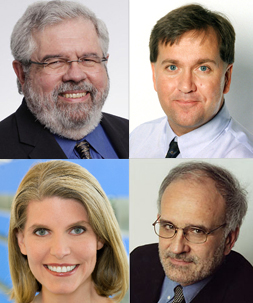 Clockwise from top-left: Johnston, Barstow, Bogdanich, Harper. |
He is editor of DIVIDED: The Perils of Our Growing Inequality, to be published in April by The New Press.
Barstow, a senior writer at NYT, won a Pulitzer in 2013 with Alejandra Xanic von Bertrab for reporting on bribery in Wal-Mart outlets in Mexico.
Bogdanich won a Pulitzer in 2008 for reporting on poisonous pharmaceutical ingredients marketed from China.
Christine Harper is Bloomberg's chief financial correspondent and the lead reporter covering Goldman Sachs.
Fee of $55 Includes Membership
Journalists who are not members can register for the conference and obtain a year’s membership for $55.
While the event is mainly for journalists, educators and others may register.
More than 30 reporters from such media as NYT (11); Wall Street Journal (six); Bloomberg (four) and Reuters (three) may be among the speakers. Their views on how they work could help PR people in dealing with the media.
Johnston and Harper will be on a panel starting at 4 p.m. titled, “The Business Beat: The Big Picture.”
Barstow will talk about “The investigative reporter’s mindset” from 10 to 11 a.m. Bogdanich will describe “The investigative interview” from 2:45 to 3:45 p.m.
“Diving deep into corporations” will be covered by Jeffrey Pohlman, senior producer, CNBC Investigative Unit, from 1:30 to 2:30 p.m.
There is a “hands-on” training program the next day from 9 a.m. to noon for an additional $30.
Income Inequality Disputed
While Johnston and others have described growing inequality in income distribution in the U.S., advocating higher taxes on top earners, others have argued that the "spread the wealth" faction fails to take into account transfer payments such as Medicaid, Medicare, nutrition assistance, the Earned income Tax Credit and employee benefits such as health insurance.
Robert Grady, who is with the private-equity firm of Cheyenne Capital Fund and who is chief economic adviser to New Jersey Governor Chris Christie and chairman of the N.J. State Investment Council, argued in the Dec. 23 Wall Street Journal that "generating economic growth--not income inequality or the redistribution of wealth--is the defining challenge of our time."
He says that measurements of inequality use a Census Bureau definition of "money income" that excludes taxes, Medicaid, Medicare, etc., and are misleading because they "ignore America's highy progressive income tax system and the panoply of benefits and transfer payments." The poverty rate has been reduced by 40% since 1967--to 16% from 26%, he says. Grady criticized the Dec. 4, 2013 speech of President Obama in which he said that lack of upward mobility for Americans "is the defining challenge of our time."
Frank Sees "Vicious Cycle of Income Inequality"
Columbia economics professor Robert Frank argued in the Jan. 12 NYT that "By enabling the best performers in almost every arena to extend their reach, technology has been a major driver of income inequality." He says "Inequality in the U.S. has been increasing sharply for more than four decades and shows no sign of retreat." He sees the same pattern in other countries. "New forces are causing inequality to feed on itself," he argues.
The wealthy spend more on gifts, clothing, housing, celebrations and similar purchases, he said, "shaping demand by others just below them." The resulting "expenditure cascades have made it harder for middle and low-income familes to make ends meet. Despite taking on huge amounts of debt, they've been unable to keep pace with community standards. Interest payments impoverish them while enriching their wealthy creditors."
Johnston, a critic of the growing use of sponsored editorial content (ads that look like a medium's regular stories), says a danger is that the medium will not undertake an investigation of a major advertiser.
IRE is an independent group based at the University of Missouri. It had net assets of $4,167,608 at the end of 2012, a gain from assets of $3,649,376 in the previous year. "Permanently restricted" are $3,175,78 of the assets. The restrictions are not spelled out. Dues income in 2012 was $255,826. Total revenues were $2,025,196. Major benefactors include the John S. and James L. Knight Foundation with grants totaling $1,445,543, and the Eugene S. Pulliam Fund ($475,000). Also contributors are the Samuel I. Newhouse Foundation, Gannett Foundation, Nicholas Ottaway Foundation and Las Vegas Fund for Freelance Journalists.
Mark Horvit, executive director of IRE, will be among the speakers Jan. 24. Also appearing will be Sarah Cohen of NYT, who heads New York/IRE.


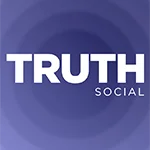 Trump Media & Technology Group today reported a $58.2M net loss on $4.1M in 2023 revenues, a disclosure that drove its stock price down 22.6 percent to $47.96.
Trump Media & Technology Group today reported a $58.2M net loss on $4.1M in 2023 revenues, a disclosure that drove its stock price down 22.6 percent to $47.96.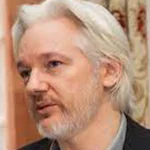 Barry Pollack, an attorney at Wall Street’s Harris St. Laurent & Wechsler, has registered Julian Assange as a client with the Justice Dept. “out of an abundance of caution.”
Barry Pollack, an attorney at Wall Street’s Harris St. Laurent & Wechsler, has registered Julian Assange as a client with the Justice Dept. “out of an abundance of caution.”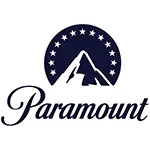 Paramount Global to slash 800 jobs in what chief executive Bob Bakish calls part of an effort to “return the company to earnings growth"... Rolling Stone editor-in-chief Noah Shachtman is exiting at the end of the month due to disagreements with chief executive Gus Wenner over the direction the magazine is taking... The New York Times broke the $1 billion barrier in annual revenue from digital subscriptions in 2023... Press Forward is investing more than $500 million to strengthen local newsrooms.
Paramount Global to slash 800 jobs in what chief executive Bob Bakish calls part of an effort to “return the company to earnings growth"... Rolling Stone editor-in-chief Noah Shachtman is exiting at the end of the month due to disagreements with chief executive Gus Wenner over the direction the magazine is taking... The New York Times broke the $1 billion barrier in annual revenue from digital subscriptions in 2023... Press Forward is investing more than $500 million to strengthen local newsrooms.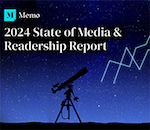 The majority of news articles are read within the first three days of publication, according to a recent report.
The majority of news articles are read within the first three days of publication, according to a recent report.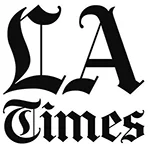 The Los Angeles Times gives pink slips to 115 people or 20 percent of its newsroom staff... TIME is also laying off about 30 employees, which is approximately 15 percent of its editorial staff... The Baltimore Banner, which was launched by Stewart Bainum in 2022 after he failed to buy the Baltimore Sun, added 500 subscribers per day in the three days following Sinclair Broadcast Group's deal to purchase the Sun.
The Los Angeles Times gives pink slips to 115 people or 20 percent of its newsroom staff... TIME is also laying off about 30 employees, which is approximately 15 percent of its editorial staff... The Baltimore Banner, which was launched by Stewart Bainum in 2022 after he failed to buy the Baltimore Sun, added 500 subscribers per day in the three days following Sinclair Broadcast Group's deal to purchase the Sun.


 Have a comment? Send it to
Have a comment? Send it to 
No comments have been submitted for this story yet.